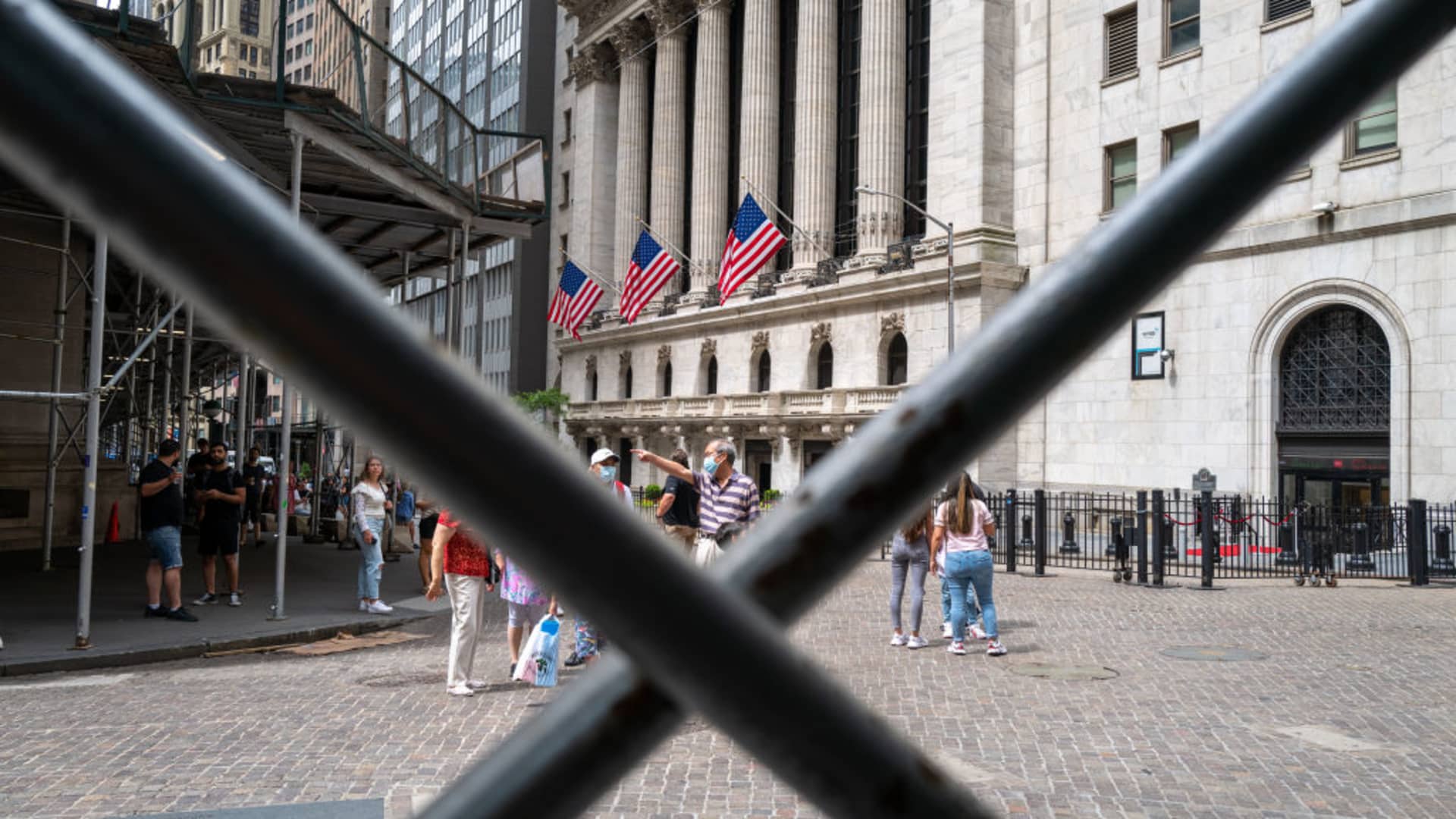People walk outside of the New York Stock Exchange (NYSE) in the financial district in Manhattan on June 14, 2022 in New York City.
Spencer Platt | Getty Images News | Getty Images
This report is from today’s CNBC Daily Open, our new, international markets newsletter. CNBC Daily Open brings investors up to speed on everything they need to know, no matter where they are. Like what you see? You can subscribe here.
What you need to know today
Delivering Alpha
Delivering Alpha, CNBC’s annual investor summit, just wrapped. Some highlights: Bill Ackman, head of Pershing Square Capital Management, thinks the 10-year U.S. Treasury yield could approach 5%; BlackRock fixed income chief Rick Rieder said the Federal Reserve will hike rates — even though he doesn’t agree with it; TCW Group CEO Katie Koch sees a recession coming for the U.S. economy.
September slump
China’s retail spending, property prices and loan growth were all weaker in September than the month before, according to the China Beige Book survey released Friday. Analysts expect the last quarter of the year to bring more clarity on China’s economic outlook, especially since the China’s ruling party is holding its Third Plenum — a meeting that typically focuses on the economy — in the coming weeks.
Big population but small labor force
Even though India’s population of 1.428 billion has surpassed that of China’s, according to UN estimates, the country’s labor force is only at 51%, trailing behind China’s 75%. And that discrepancy will persist until the late 2040s, according to Oxford Economics. That might prove an obstacle to India’s ambitions to grow its economy.
[PRO] A simple bond trade
Market watchers are expecting global interest rates to fall in the next 12 months — whether it’s because of vanquished inflation or impending recession. When that happens, this simple bond trade can earn you 40% in returns, said investment analysts.
The bottom line
A smattering of positive developments helped investor sentiment yesterday. But long-term prospects still look uncertain.
Yields on U.S. Treasurys pulled back slightly. At 4.589%, the 10-year yield’s still the highest it’s been in decades, but it’s actually down around five basis points from Wednesday. And it’s the direction of the move traders are keeping their eye on.
Likewise, oil prices retreated, giving investors — and the broader economy — a slight reprieve. U.S. West Texas Intermediate futures fell 2.1% to settle at $91.71 while Brent dropped 1.21% to $95.38.
That easing of pressure, however small, gave stocks some confidence to rise. The Dow Jones Industrial Average climbed 0.35% for its first positive session in three. The S&P 500 added 0.59% to hit 4.299.80, a hair’s breadth away from the key 4,300 level. The Nasdaq Composite jumped 0.83%, propelled by a rebound in tech stocks — shares of AMD, in particular, popped nearly 5% after Microsoft’s chief technology officer praised the chipmaker.
Investors, however, aren’t so sure about the long run. According to the latest survey by the American Association of Individual Investors, which measures retail investors’ sentiment for stocks over the next six months, overall bearishness climbed from 34.6% last week to 40.9%. That’s the highest since mid-May and over the historical average of 31%.
Renowned analysts and fund managers were similarly pessimistic at CNBC’s Delivering Alpha conference. Warnings of an impending recession, the 10-year Treasury yield approaching 5% and another rate hike by the Federal Reserve dominated the summit.
Of course, those are warnings, not immutable courses of action. If, for instance, the personal consumption expenditures price index, which comes out later today, satisfies the Federal Reserve that inflation is adequately tamed, rates might remain unchanged for the rest of the year and give stocks more room to breathe. But the mood, for now at least, is things are going to get worse before they get better.
— CNBC’s Scott Schnipper contributed to this report

